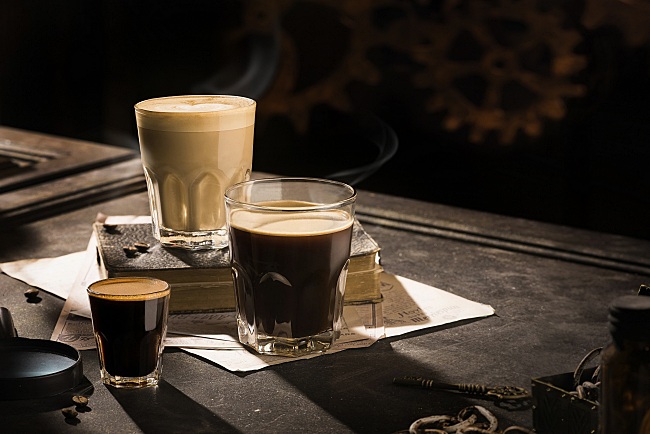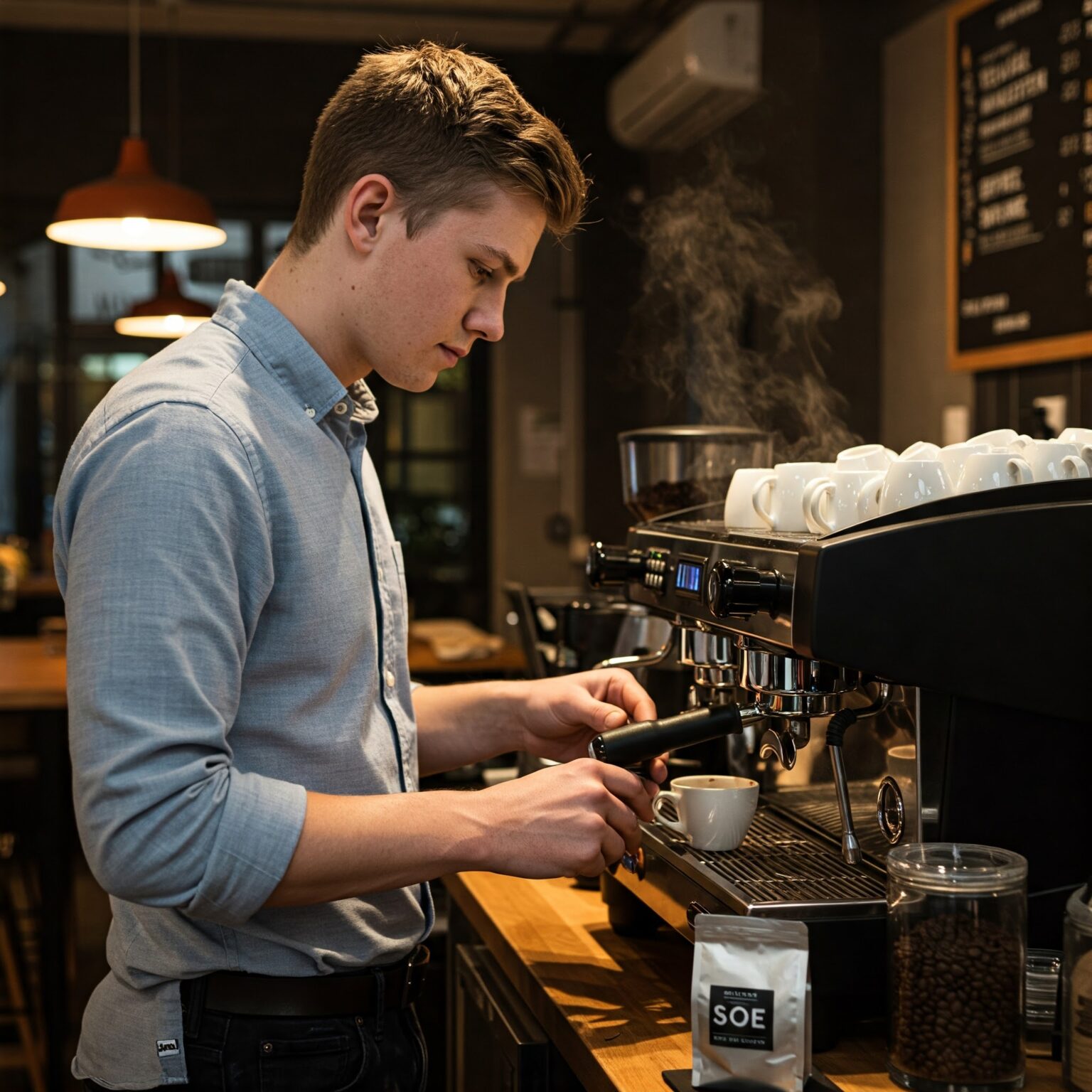Comprehending Coffee Beans: the Trip From Coffee to Blended Coffee Beans

The Origins of Coffee: A Global Point Of View
While you may think of coffee as a contemporary staple, its beginnings map back centuries, intertwining with cultures throughout the world. The tale begins in Ethiopia, where legend says a goat herdsman named Kaldi uncovered the stimulating results of coffee beans after noticing his goats romping vigorously after consuming them.
As profession courses broadened, coffee made its way to Europe in the 17th century, swiftly gaining popularity. It changed from a magical drink into a day-to-day ritual, motivating events and intellectual exchanges. Each culture added its one-of-a-kind twist to coffee preparation, improving its background. This worldwide trip highlights how coffee links us, transcending borders and joining diverse customs via an easy bean.
Farming and Harvesting of Espresso Beans
As coffee's trip evolved, the emphasis shifted to the cultivation and harvesting of specific bean ranges, particularly those utilized for espresso. You'll discover that espresso beans frequently originate from Arabica or Robusta plants, each offering unique flavors. The perfect expanding conditions include high altitudes and abundant, well-drained soil, which boost the beans' top quality.
During the harvest, picking techniques differ. Timing is crucial; you want to collect when the cherries get to peak perfection for maximum taste.
As soon as harvested, the beans are prepared for handling, which is important in establishing their final taste. Recognizing the growing and gathering processes provides you insight right into what enters into your preferred coffee, enhancing your gratitude for each cup.
Handling Methods: From Cherry to Bean
Now that you have actually found out regarding collecting coffee beans, allow's discover exactly how those cherries change into the coffee beans you enjoy. You'll see just how various harvesting methods impact taste, complied with by the important actions of fermentation and drying out. We'll break down the milling and grading process that determines your coffee's high quality.
Collecting Methods Described
When it involves coffee, recognizing harvesting strategies is crucial, given that they straight influence the taste and high quality of the beans you take pleasure in. There are two primary methods: discerning selecting and strip selecting. Discerning choosing involves hand-picking only ripe cherries, ensuring you obtain the finest high quality beans. This method frequently results in a richer taste profile, though it's more labor-intensive. On the various other hand, strip picking methods gathering all cherries at when, no matter of perfection. While it's quicker and cheaper, this can lead to a mix of flavors, impacting the end product. Eventually, the choice of harvesting strategy can significantly affect your coffee experience, so it deserves knowing how those beans made it to your cup.
Fermentation and Drying Out
After collecting, the next steps in handling coffee beans play a substantial role in forming their flavor. You'll find that fermentation is essential, as it assists damage down the mucilage bordering the beans, boosting their preference profile. Relying on the approach, this procedure can last from a few hours to several days, with differing outcomes based on temperature and humidity.
Sun-drying permits the beans to absorb tastes from the setting, while mechanical drying warranties consistent moisture levels regardless of weather. Correct drying out is necessary to avoid mold and mildew and preserve the beans' quality, inevitably affecting your mug of coffee.
Milling and Grading Refine
As fermentation and drying out set the phase for taste development, the milling and grading process guarantees that just the finest coffee beans make it to your cup. This stage includes eliminating the outer layers of the coffee cherry, including the parchment and husk. High-quality beans obtain a higher quality, resulting in a richer coffee experience.
Toasting Techniques: Unlocking Taste Possible
When you roast coffee beans, the approach you select can considerably impact the taste account. Understanding the partnership between time, temperature level, and roasting techniques is key to disclosing the potential of your brew. Let's discover how these elements come together to produce the excellent cup.
Toasting Techniques Clarified
While you may assume that all coffee roasting methods produce the very same results, the fact is that each technique exposes one-of-a-kind flavor capacities in the beans. You can select in between approaches like drum toasting, air roasting, or even standard pan roasting. Drum toasting uses a revolving drum to equally distribute warmth, improving caramelization and producing a balanced flavor. Air roasting, on the various other hand, distributes hot air around the beans, advertising a lighter roast with noticable level of acidity. Frying pan roasting enables hands-on control yet needs constant attention to avoid burning. Each technique has its nuances, so explore different methods can help you uncover the ideal roast that aligns with your preference preferences. Delight in the trip of discovering your excellent mug!

Effect On Taste Profile
Various toasting methods not only influence the process but additionally substantially impact the taste profile of the coffee beans. Dark roasts, on the other hand, bring out strong, great smoky flavors, sometimes concealing the bean's one-of-a-kind characteristics. Comprehending these subtleties helps you appreciate the virtuosity behind your cup of coffee, improving your total experience with every sip.
Time and Temperature Level Aspects
To release the full flavor potential of coffee beans, both time and temperature throughout the toasting procedure play considerable functions. When roasting, you'll locate that greater temperature levels can promptly establish tastes, however if you hurry it, you might finish up with scorched notes. Conversely, reduced temperature levels permit for an extra gradual flavor development, showcasing the beans' special characteristics.

Timing is just as important; expanding the roast also long can result in a loss of level of acidity and illumination, while as well short a roast might leave the beans underdeveloped. Discovering that sweet area requires technique and testing. By adjusting these factors, you can expose the rich, complex tastes concealed within each bean, producing a genuinely remarkable coffee experience.
The Art of Blending: Crafting Unique Coffee Profiles
Start by choosing a base coffee that supplies a strong foundation. A bright Ethiopian bean can bring fruitiness, while a rich Brazilian coffee adds body.
As you mix, remember that each mix narrates. You're not just making coffee; you're producing an experience. So, take your time, preference frequently, and take pleasure in the trip of discovering your signature blend.
Developing Approaches: Just How Preparation Influences Flavor
Blending coffee opens a domain name of taste possibilities, however exactly how you make that mix can substantially affect your final mug. Various brewing techniques draw out one-of-a-kind tastes and fragrances, so it's vital to pick carefully. As an example, a French press allows sediments and oils to stay, producing a rich, full-bodied experience. On the other hand, a pour-over highlights the coffee's clearness and brightness, perfect for showcasing fragile notes.
Coffee, with its high stress, generates a focused shot that emphasizes sweet taste and crema. If you like a lighter brew, consider a cool brew method; it generates a smooth, less acidic preference.
Adjusting variables like water temperature level, grind size, and make time can transform your coffee's account. Accept Single Origin Espresso the art of developing to discover the tastes hidden in your coffee blends.
The Future of Coffee: Sustainability and Innovation
As the coffee sector progresses, sustainability and innovation are ending up being essential for resolving environmental difficulties and conference customer demands. You'll observe that even more coffee companies are adopting green methods, from sourcing beans morally to applying lasting farming strategies. These changes not just assist the earth however also improve the quality of the coffee you appreciate.
You might see innovations like biodegradable packaging and water-saving developing techniques that minimize waste. Advanced technology, such as blockchain, is additionally becoming prominent, making sure transparency in the supply chain, which enables you to map your coffee back to its beginnings.
In addition, buying regional neighborhoods and supporting farmers with fair trade initiatives promotes a much more sustainable coffee environment. As you sip your following mug, bear in mind that your choices can contribute to a brighter future for coffee. By choosing for sustainable brand names, you're not simply taking pleasure in a beverage; you're making a positive effect on the world.
Often Asked Concerns
What Is the Distinction Between Arabica and Robusta Beans?
Arabica beans are smoother, sweeter, and have a higher level of acidity, while robusta beans are more powerful, much more bitter, and include even more high levels of caffeine. When making your coffee., you'll observe these distinctions in taste and aroma.
How Does Altitude Affect Coffee Bean Taste?
Elevation impacts coffee bean flavor considerably. Greater altitudes create beans with brighter acidity and complex tastes, while reduced altitudes usually generate beans that are larger and much less nuanced. You'll notice these distinctions in your cup!
What Are the Wellness Advantages of Drinking Coffee?
Consuming alcohol coffee can improve your energy, enhance mental focus, and also improve physical performance. It's abundant in antioxidants, might lower the threat of specific diseases, and can advertise a healthier metabolic process when eaten in small amounts.
Can Coffee Beans Be Reused for Brewing?
Yes, you can recycle coffee beans for brewing, however the taste could be weak. If you appreciate experimenting, attempt reusing them in various methods, like cool brews or including in shakes for an extra kick.
How Should I Shop Coffee Beans for Quality?
To maintain your coffee beans fresh, store them in an airtight container in a trendy, dark location. Prevent revealing them to wetness, light, or heat, as these aspects can quickly deteriorate their flavor and scent.
Understanding Coffee Beans: the Journey From Coffee to Blended Coffee Beans.
Currently that you have actually found out about gathering coffee beans, allow's discover exactly how those cherries transform into the coffee beans you like.When you roast coffee beans, the approach you pick can considerably influence the taste profile - Single Origin Espresso.While you might believe that all coffee toasting approaches produce the exact same results, the fact is that each technique exposes special flavor possibilities in the beans.Different toasting approaches not just influence the process but also substantially affect the flavor profile of the coffee beans